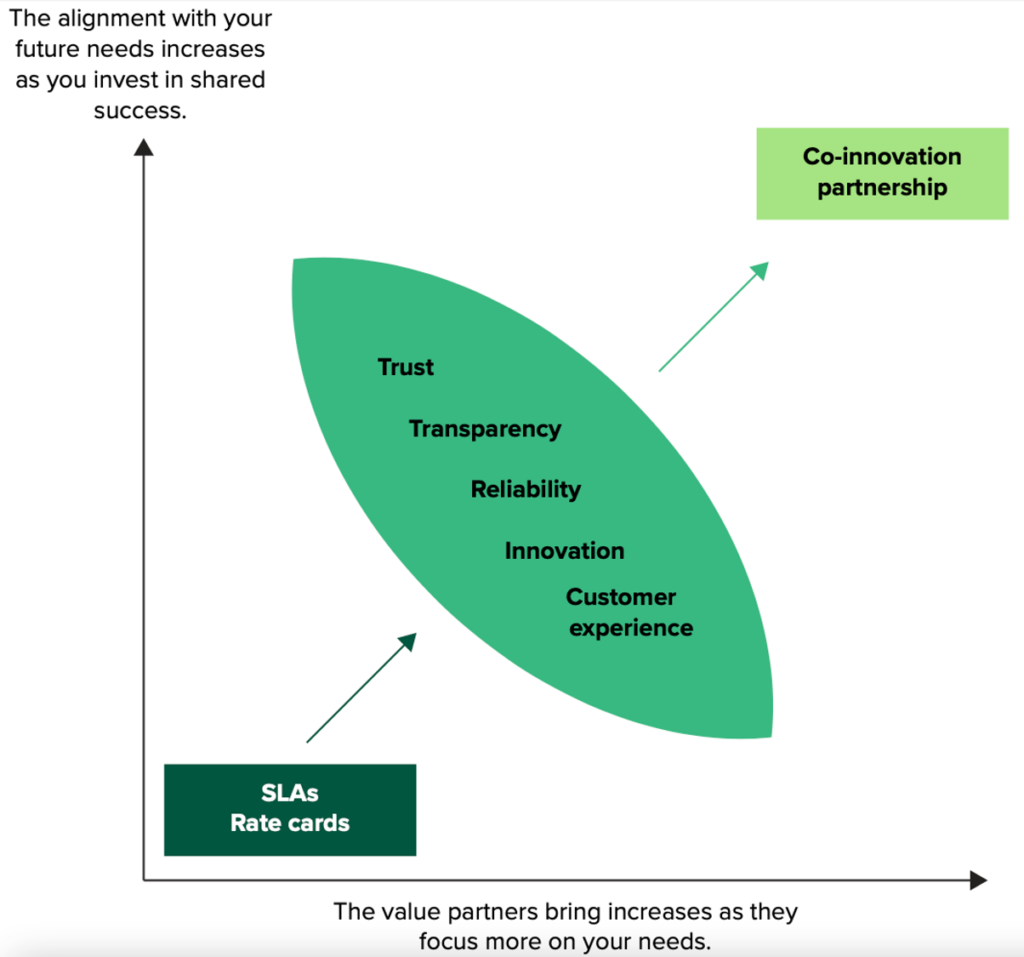The Key Is Stronger Value Exchange, Particularly With Your Strategic Partners
The old rate card, RFP, and service-level agreement (SLA)-driven models don’t work well in a future fit enterprise, where transformation is continuous, multidimensional, and uncertain and where strategy and implementation are tightly coupled. That’s why enlightened tech leaders are looking beyond capabilities and price to embrace a new technology and services paradigm built on a clearer value exchange that we call “co-innovation partnership.”
The value exchange is highest if you and your partners focus on trust, transparency, reliability, innovation, and your own customer experience (see the figure). All parties have work to do to get the most out of the vast and expanding universe of value available in cloud ecosystems. A co-innovation partnership works when:
- Vendors and providers assume more risk and are rewarded based more on outcomes. Cloud, software, and BPO providers do this already. To traditional services customers, this may sound impossible, but Forrester Analytics survey data found that 35% of global services decision-makers plan to increase their use of outcome-based pricing with third-party services providers in 2021.
- Business, operations, and technology executives co-invest and co-govern. Co-innovation success only happens when technology leaders and other C-suite executives invest time and energy in these relationships. Vendors and providers need to know your priorities and that you will identify and overcome internal barriers to success.
- Both sides benefit from creating new value and intellectual property. For vendors, it’s their intellectual property. For services, intellectual property should be on the table for both sides. It may be that you make more money by sharing your secret sauce with a provider, or even with a community.

Focus Co-Innovation Partnership On Your Most Strategic Vendors
Select strategic partners based on their contribution to your business outcomes. These aren’t the hundreds of vendors you’re working with today, nor is “partner” a euphemism for vendors that consume large shares of your budget. Instead, focus your attention on the dozen or so truly strategic partners that are most important to your success and where both the scale and strength of the relationship are highest.
- Favor co-innovation partners with shortlist preference in future deals. Extend and strengthen your best partnerships, and try to fix important relationships before they fail the partnership test.
- Move away from vendors that command your budget but don’t differentiate you. Shift commodity relationships to a different management track if vendors that provide a service are not strategic to your future growth.
- Co-innovate with startups and specialists to tap into the cutting edge. Spot up-and-coming vendors that consistently deliver excellent customer experience or show superior levels of innovation. Invite them to inspire you, to accomplish something different, and to do it fast.
